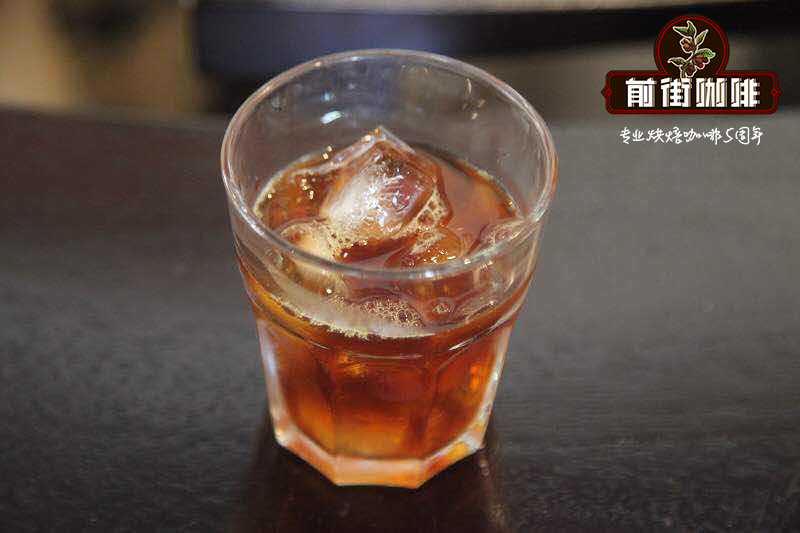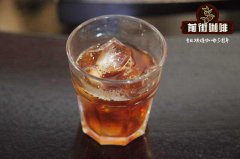What is the flavor wheel? What's the idea? What is the difference and function between new and old flavor wheels?

Professional coffee knowledge exchange more coffee bean information please follow the coffee workshop (Wechat official account cafe_style)
What is the flavor wheel? What's the idea? What is the difference and function between new and old flavor wheels?
The American Fine Coffee Association (SCAA), the symbol of the boutique coffee industry, designed the "Coffee Flavor Wheel" (Coffee Taster's Flavor Wheel), which was updated for the first time in 21 years at the beginning of this year. The revision of the new edition of Flavor Wheel is based on the World Dictionary of Coffee sensory Research (The World Coffee Research Sensory Lexicon). This masterpiece brings together the wisdom of dozens of experts and scholars from different fields such as sensory science, coffee procurement and coffee roasting. With the coordinated guidance of SCAA and the cooperation of the World Coffee Research Association (WCR), experts updated and adjusted the Flavor Wheel for the first time. This is the largest special study on coffee taste in human history, and the taste types and technical terms covered by "Flavor Wheel" have been effectively supplemented. This new "flavor wheel" will completely subvert the overall development of the coffee industry and the application of coffee taste.
Old coffee flavor wheel
New version of coffee flavor wheel
Yes, any cafe that claims to be a boutique will have a picture mounted on a plaque on the wall. It looks like a tall picture.
But can you read it? Do you know what it does? Without a manual, I can't understand it at all.
In fact, the flavor wheel doesn't make more sense until you learn to interpret the flavor of a cup of coffee more accurately, because most people don't know why or how to taste a cup of coffee. The flavor wheel can better help us build a memory bank of coffee flavor, help us distinguish the taste of coffee, and distinguish between good coffee and bad coffee.
99% of our happiest times come from our first experience.
Before we taste the boutique coffee for the first time, what we need to understand is:
Text picture
The training of taste, or memory, improves our ability to distinguish. This is the result of the joint operation of vision, smell and taste. While you have a tiger in your heart, let the tiger in your heart learn to sniff the rose.
In that case, the question comes again: what are the requirements for tasting coffee?
There are always a lot of mandatory requirements, such as many people who have been there to tell you, just drink more. Drink, drink, vomit, throw up and continue to drink, drink endlessly. . Let's just say, you're thinking too much.
The truth is, keep drinking and remembering. It takes a process of accumulation. The so-called accumulation process is also a painful training process, spending a lot of money, using a lot of time, with a certain amount of quantity to achieve a qualitative leap.
And this high-end picture helps us remember, and helps us express it in more professional terms.
1. Aroma
Smell is a volatile substance, invisible, can not be touched or seen, can only approach it and feel it. Remembering the smell of your surroundings is an exercise that needs to be accumulated in daily life. Usually, we should consciously remember the smell of the surrounding living environment: tarmac roads, gardens, woods, seasoning cans in the kitchen, vegetable markets, and so on. The purpose of this exercise is to classify all kinds of aromas-floral, fruity, nutty, balsam, scorched odor, etc. Finally, be able to understand the common characteristics of each smell type.
Memory is the persistence of psychology in time, and memory is inseparable from memory in the process of perception, discrimination, monitoring, and comparison.
The brain receives information? Make a comparison? Analysis? Memory (the whole process)
This kind of taste memory training is very useful, it can turn the smell you smell into some kind of scene. Build your own taste memory bank. For example, when you smell the aroma of Yejia Xuefei, you will think of walking in the pristine forest, filled with the fragrance of flowers, the sweetness of fruit, and even the sour feeling of lemon.
Memory of the smell of specific objects: this exercise requires blindly smelling various objects with your eyes closed, and then classifying them. For example, the practice of fruity. We collect all kinds of fruits, smell them first, and try to remember them. Then randomly select a fruit blindfolded and first classify it: is it white fruit? Red and black fruit? Or dried fruit? Then it is specific to what kind of fruit it is, and what state it is in: fresh? Mature? Overripe and rotten? Wait. Even constantly increase the types of odors, cross, mix a variety of odors, can help tasters to learn to identify all kinds of odors. There is already a very specific induction and classification in this latest flavor wheel.
Second, sense of taste
As everyone's preference for taste varies greatly, so does their acceptance. We can taste a taste, but we can't describe it accurately.
On the other hand, the flavor wheel classifies all the taste systems perceived by human beings, and with practice, it can clearly perceive the tiniest differences among all tastes.
Our tongues have two kinds of "receivers":
The first kind: taste buds. It covers the whole tongue and can be used to taste food (drink).
The second kind: taste. It is sensed through the peripheral nerves above our mouth and tongue.
Taste-the smooth and astringent taste of the entrance. Smooth (high quality, fibrous), astringent (polyphenols). Body (what we often call caffeine thickness) is mainly reflected by the tactile sensation caused by the oil and fiber of coffee that is insoluble in water. The more the content, the more sticky or smooth it is. Astringency, contrary to smoothness, is the roughness of polyphenols (molecules insoluble in water in coffee beans) in the mouth, an unsmooth touch.
The smooth and thick taste of coffee is a kind of colloid formed by oily proteins, fibres and other tiny suspensions that do not dissolve in water, forming a sense of touch in the mouth.
Astringency in wine comes from tannins. However, coffee beans contain almost no tannic acid, which exists only in trace amounts in the pericarp of coffee. The astringency of coffee mainly comes from the degradation of "chlorogenic acid" in raw beans into "dicaffeoylquinic acid" Dicaffeoylquinic acid during roasting, which is sour and bitter, but it is a powerful antioxidant.
Important Notice :
前街咖啡 FrontStreet Coffee has moved to new addredd:
FrontStreet Coffee Address: 315,Donghua East Road,GuangZhou
Tel:020 38364473
- Prev

What tools do I need to prepare for the cup test? What is the ratio of powder to water? What are the steps?
Professional coffee knowledge exchange More coffee bean information Please pay attention to coffee workshop (Weixin Official Accounts cafe_style) What tools do you need to prepare for cup test? What is the ratio of powder to water in the cup? What are the steps? "Before the beans are sent to other parts of the world, they are first tested by the coffee farmers 'association or refining factory where they are produced. That is, they are tested to confirm the aroma and taste of the beans.
- Next

What is the function of the flavor wheel? How was the flavor wheel born? What is the concept of flavor wheel?
Professional coffee knowledge exchange more coffee bean information please follow the coffee workshop (Wechat official account cafe_style) what is the role of the flavor wheel? How was the flavor wheel born? What is the concept of flavor wheel? In the 2016 SCA Chronicle, Emma Sage, the association's coffee science manager, and Hanna Neuschwander of the World Coffee Research Institute, take you to explore the new style in depth.
Related
- Detailed explanation of Jadeite planting Land in Panamanian Jadeite Manor introduction to the grading system of Jadeite competitive bidding, Red bid, Green bid and Rose Summer
- Story of Coffee planting in Brenka region of Costa Rica Stonehenge Manor anaerobic heavy honey treatment of flavor mouth
- What's on the barrel of Blue Mountain Coffee beans?
- Can American coffee also pull flowers? How to use hot American style to pull out a good-looking pattern?
- Can you make a cold extract with coffee beans? What is the right proportion for cold-extracted coffee formula?
- Indonesian PWN Gold Mandrine Coffee Origin Features Flavor How to Chong? Mandolin coffee is American.
- A brief introduction to the flavor characteristics of Brazilian yellow bourbon coffee beans
- What is the effect of different water quality on the flavor of cold-extracted coffee? What kind of water is best for brewing coffee?
- Why do you think of Rose Summer whenever you mention Panamanian coffee?
- Introduction to the characteristics of authentic blue mountain coffee bean producing areas? What is the CIB Coffee Authority in Jamaica?

